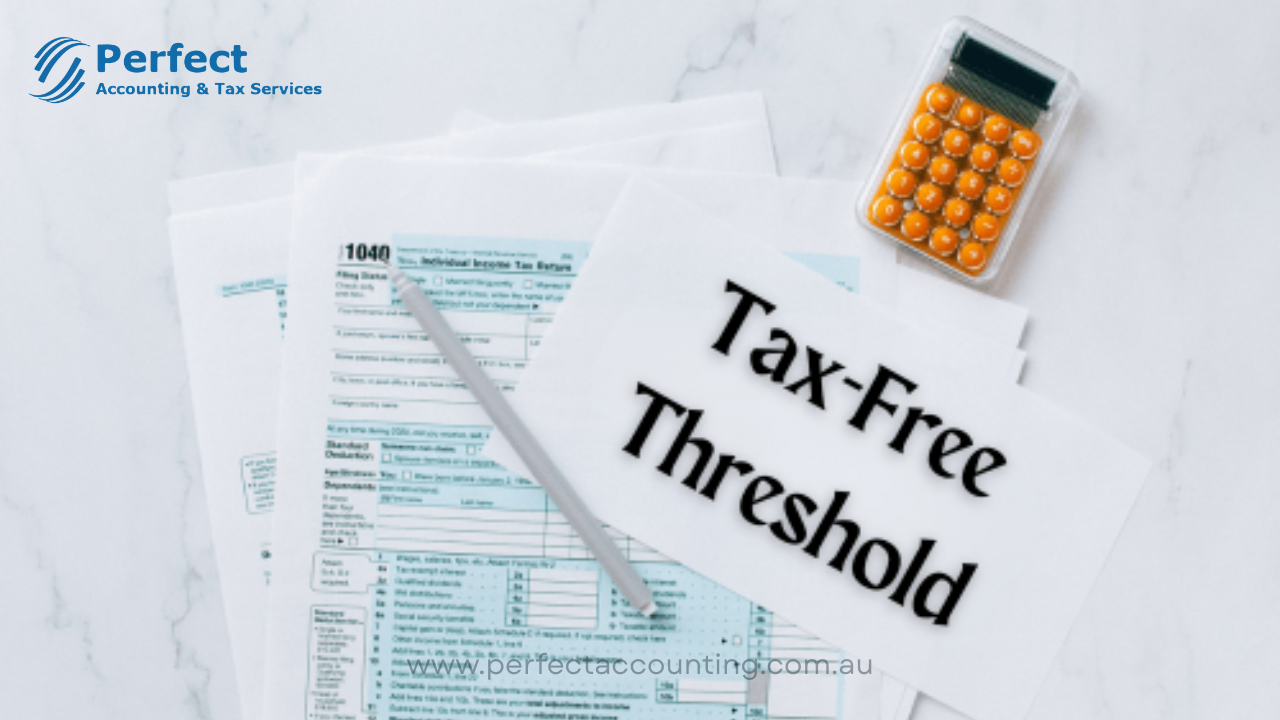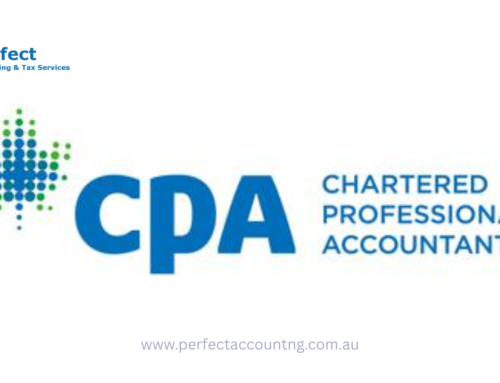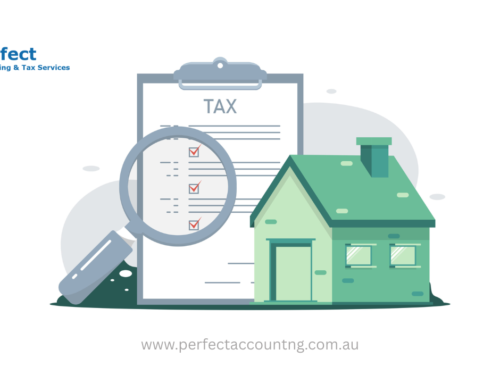If you’ve ever started a new job or filled out a tax return in Australia, chances are you’ve come across the term tax-free threshold. It might sound like fancy financial jargon, but in reality, it’s a simple concept that could help you keep more money in your pocket—if you know how it works.
In this article, we’ll break it all down in plain English. You’ll learn what the tax-free threshold is, how it affects your income tax, and whether you should claim it. We’ll also walk you through real-life examples, provide a step-by-step guide, and introduce you to Perfect Accounting, your trusted partner for tax help in Australia.
What is the Tax-Free Threshold?
Let’s start with the basics.
The tax-free threshold is the amount of income you can earn each financial year without having to pay any income tax. As of now, in Australia, that amount is $18,200.
That means if you earn $18,200 or less in a financial year, you won’t owe any income tax at all. If you earn more than that, you only pay tax on the income that goes over the $18,200 threshold.
Anecdote Time!
Let’s say Sarah just got her first job at a café in Melbourne. She’s a uni student and only works part-time, earning around $15,000 a year. When filling out her tax file number declaration, her boss asks: “Do you want to claim the tax-free threshold?”
Sarah wasn’t sure what that meant, but after a quick chat with her tax agent at Perfect Accounting, she realised that by claiming it, she wouldn’t have to pay any tax on her part-time income.
How Does the Tax-Free Threshold Affect Your Pay?
If you claim the tax-free threshold, your employer will withhold less tax from your pay each week or month. This means:
-
Your take-home pay will be higher
-
You won’t overpay tax during the year
On the flip side, if you don’t claim it, your employer might withhold more tax than necessary. That’s not the end of the world, though—it just means you’ll likely get a tax refund at the end of the financial year.
Should You Claim the Tax-Free Threshold?
Here’s a simple rule of thumb:
| Situation | Should You Claim It? |
|---|---|
| You only have one job | ✅ Yes |
| You have two or more jobs | ⚠️ Only claim from your main job |
| You’re a student earning less than $18,200 per year | ✅ Yes |
| You’re unsure what to do | Ask Perfect Accounting |
Claiming the tax-free threshold from multiple jobs can lead to a tax debt at the end of the year, so it’s essential to get it right.
How to Claim the Tax-Free Threshold: A Step-by-Step Guide
If you’re starting a new job, here’s how to claim the tax-free threshold:
-
Fill out the Tax File Number (TFN) declaration form.
Your employer will give you this form when you start. You can also find it on the ATO website. -
Tick ‘Yes’ to claim the tax-free threshold.
There’s a question that asks if you want to claim it. If this is your main or only job, tick Yes. -
Submit the form to your employer.
They’ll send it to the ATO, and your pay will be taxed correctly. -
Keep a copy for your records.
What If You Forget to Claim It?
Don’t worry—you’re not stuck paying too much tax forever. When you lodge your annual tax return, the ATO will calculate whether you paid too much tax during the year. If you did, you’ll get a refund.
However, if you want to maximise your pay throughout the year, it’s best to claim the tax-free threshold right away—especially if you’re earning under or close to $18,200.
Common Questions About the Tax-Free Threshold
❓ What if I have more than one job?
You can only claim the tax-free threshold from one employer at a time. Choose the one where you earn the most.
❓ What if I start working part-way through the year?
The $18,200 threshold still applies, but it’s spread over the financial year. If you only work for part of the year, the ATO will adjust it when you file your return.
❓ Can I change my choice later?
Yes, you can! Just fill out a new TFN declaration form and submit it to your employer.
Why You Should Use a Tax Professional Like Perfect Accounting
Let’s be real—tax rules can be confusing, and even small mistakes can lead to unexpected tax debts or missed refunds.
That’s where Perfect Accounting steps in.
With years of experience helping Australians navigate the ATO, their friendly team of accountants and tax agents will ensure you:
-
Claim the tax-free threshold correctly
-
Maximise your tax refund
-
Avoid penalties or debts
-
Get personalised advice that suits your situation
Ready to take control of your tax?
Visit Perfect Accounting today and book a free consultation.
FAQ’s
How much income is tax-free in Australia?
The tax-free threshold refers to how much you can earn in a financial year before you are liable to pay tax. For Australian residents the tax-free threshold is currently $18,200, meaning the first $18,200 of your income is tax free, but you are taxed progressively on income above that amount.
How much is $1,200 a week taxed in Australia?
How much tax do I pay on a weekly pay of $1,200 in Australia? You will pay $231 in tax, with the tax free threshold.
How much money can I bring into Australia tax-free?
There is no limit to the amount of physical currency that may be brought into or taken out of Australia. However, travellers entering and departing Australia must report any currency they are carrying of $10,000 or more in Australian dollars, or the foreign currency equivalent.
How much tax do I pay on $80,000 in Australia?
| Frequency | Gross income | Income tax |
|---|---|---|
| Annually | $80,000 | $16,388 |
| Monthly | $6,666 | $1,365 |
| Fortnightly | $3,076 | $630 |
| Weekly | $1,538 | $315 |
Final Thoughts: Don’t Miss Out on Your Tax-Free Dollars
Understanding and correctly claiming the tax-free threshold is one of the easiest ways to make sure you’re not paying more tax than necessary.
Whether you’re a student, part-timer, or just starting your career, make sure you’re not leaving money on the table. And when in doubt, reach out to Perfect Accounting—your go-to team for honest, helpful tax support in Australia.







